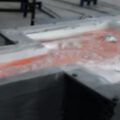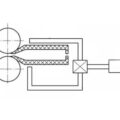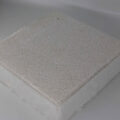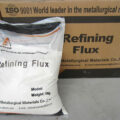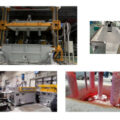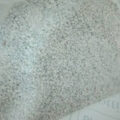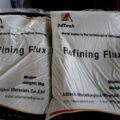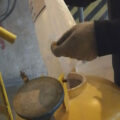Flux refining method is to achieve the purpose of slag removal by adsorbing, dissolving oxide inclusions and adsorbing the hydrogen in molten aluminum, floating up to the liquid level and entering the slag. The flux is generally composed of a mixture of alkali metal or alkali metal halide. After the aluminum liquid is added, the difference in wettability between the contact phases is used to adsorb and dissolve the oxidized inclusions in the aluminum liquid and the hydrogen on it, and float to the liquid Into the slag on the surface to achieve the purpose of removing impurities and exhaust. Because of the low cost of molten aluminum flux, this method is widely used, but its ability to remove suspended fine inclusions is poor.

The impurity removal effect of the flux refining method is directly related to the physical and chemical properties of the flux itself, and at the same time largely depends on the process conditions, such as: the amount of flux, the contact conditions between the flux and the melt, and the temperature. The flux method is often based on the accumulation of experience, and it is difficult to give full play to the role of flux. In modern automobile casting aluminum alloy production, this flux refining method is gradually replaced by other technologies.
The vacuum treatment method uses the principle that the gettering tendency of the aluminum alloy melt in vacuum tends to zero, and the tendency of hydrogen precipitation from the aluminum alloy melt is very strong, so that the hydrogen that has been dissolved in the aluminum alloy melt is continuously precipitated. Non-metallic inclusions are also taken away when the hydrogen bubbles float up, so that the aluminum alloy melt can be purified. It has the advantages of not polluting the alloy liquid; it can be purified after deterioration without destroying the deterioration effect of sodium, avoiding secondary hydrogen absorption and oxidation during the deterioration process, the pinhole rate is significantly reduced, and the mechanical properties are significantly improved. From the perspective of environmental protection, no use of purifying agents and purification effects, it is a promising purification technology that can be divided into static vacuum purification treatment and dynamic vacuum purification treatment.
The basic principle of ultrasonic purification is to pass elastic waves into the aluminum alloy melt, which will cause “cavities” in the aluminum alloy melt, destroy the continuity of the aluminum alloy melt, and generate a large number of microscopic holes, which are dissolved in aluminum. The hydrogen in the alloy melt enters these cavities, becomes the core of the bubble, continues to grow into bubbles, and escapes from the aluminum alloy melt to achieve the purpose of purification.
Electromagnetic purification is mainly to remove inclusions, and use the difference in conductivity between aluminum alloy melt and inclusions to achieve separation. There are many solutions that can generate electromagnetic force and achieve electromagnetic purification. The most important ones are: DC electric field and orthogonal stable magnetic field, AC magnetic field, alternating electric field, traveling wave magnetic field, rotating magnetic field and electromagnetic stirring, high-frequency magnetic field and super magnetic field Wait. However, the basic mechanism of removing inclusions from aluminum alloy melts comes down to the following: the inclusions collide with the collector and are captured, thereby separating from the melt. It can realize the continuous purification of metal, improve the effect material, and facilitate the movement.

However, vacuum purification treatment, ultrasonic purification treatment, electromagnetic purification treatment and other non-adsorption purification treatment methods have not been widely used in industry because of poor purification effect, or complicated equipment and process, and high cost.

